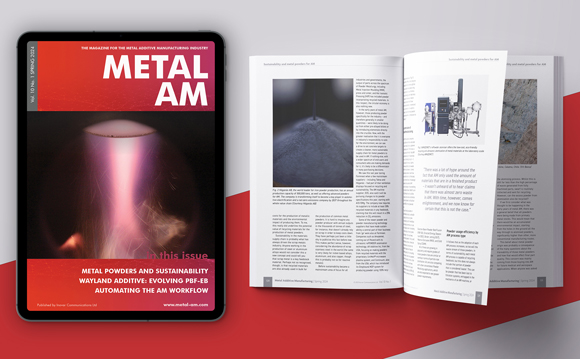Markforged’s Q2 results exceed expectations
August 19, 2022
Markforged, Watertown, Massachusetts, USA, has announced its results for the second quarter ended June 30, 2022. Revenue increased by 19% to $24.2 million in the second quarter of 2022, up from $20.4 million in Q2 2021. Net profit (loss) was a profit of $4.1 million in the second quarter of 2022, compared to a net loss of $11.1 million year over year.
“Demand for The Digital Forge continues to grow. Our customers realise the value of our additive solutions as they solve for a growing number of applications with high-quality parts right at the point of need, especially in the current global environment racked with supply chain challenges,” stated Shai Terem, president.
“We continue to make great strides in executing on our strategy thanks to great efforts from our talented team. We feel very confident in our long-term opportunity to extend our leadership position in distributed manufacturing as our product portfolio grows and evolves. The pending acquisition of Digital Metal, coupled with our organic product innovation engine, will continue to expand our addressable market and help our customers solve even more industrial manufacturing challenges.”
Gross margin was 53% in the second quarter of 2022 compared to 58% Q2; non-GAAP gross margin was 54% versus 59%. GAAP earnings per share was a profit of $0.02 for the second quarter of 2022, compared to a loss of $0.28 in the second quarter of 2021. Cash and cash equivalents were $243.2 million as of June 30, 2022.
The sales for the Digital Forge remained strong across products and continued to grow for Markforged’s newest Additive Manufacturing machine, the FX20. Global orders for the FX20, in particular, were said to have exceeded the company’s expectations.
“Our customers realise the value of The Digital Forge and, while our pipeline continues to grow, we have started to see the impact of the uncertainty created by global macroeconomic conditions,” added Mark Schwartz, Chief Financial Officer. “Our sales cycles are growing longer due to customers’ hesitation to commit to capital expenses in this current environment. We are therefore adjusting our guidance accordingly. Our confidence in our medium- to long-term outlook has not changed.”
















